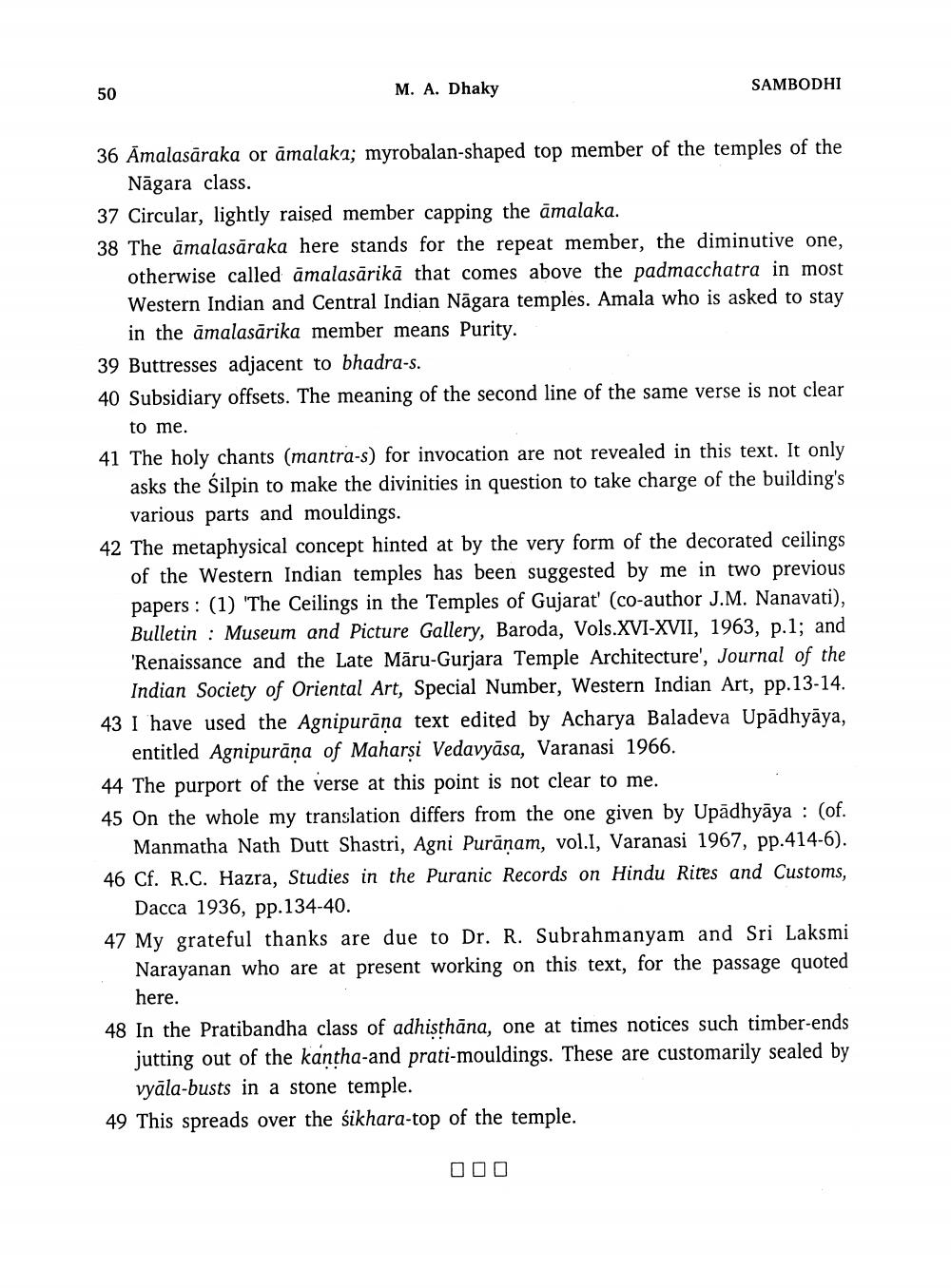________________
50
M. A. Dhaky
SAMBODHI
36 Āmalasāraka or āmalakı; myrobalan-shaped top member of the temples of the
Nāgara class. 37 Circular, lightly raised member capping the amalaka. 38 The āmalasāraka here stands for the repeat member, the diminutive one,
otherwise called amalasarikā that comes above the padmacchatra in most Western Indian and Central Indian Nāgara temples. Amala who is asked to stay
in the āmalasārika member means Purity. 39 Buttresses adjacent to bhadra-s. 40 Subsidiary offsets. The meaning of the second line of the same verse is not clear
to me. 41 The holy chants (mantra-s) for invocation are not revealed in this text. It only
asks the Silpin to make the divinities in question to take charge of the building's
various parts and mouldings. 42 The metaphysical concept hinted at by the very form of the decorated ceilings
of the Western Indian temples has been suggested by me in two previous papers : (1) The Ceilings in the Temples of Gujarat' (co-author J.M. Nanavati), Bulletin : Museum and Picture Gallery, Baroda, Vols.XVI-XVII, 1963, p.1; and 'Renaissance and the Late Māru-Gurjara Temple Architecture', Journal of the
Indian Society of Oriental Art, Special Number, Western Indian Art, pp.13-14. 43 I have used the Agnipurāna text edited by Acharya Baladeva Upadhyāya,
entitled Agnipurāna of Maharsi Vedavyāsa, Varanasi 1966. 44 The purport of the verse at this point is not clear to me. 45 On the whole my translation differs from the one given by Upādhyāya : (of.
Manmatha Nath Dutt Shastri, Agni Purānam, vol.I, Varanasi 1967, pp.414-6). 46 Cf. R.C. Hazra, Studies in the Puranic Records on Hindu Rites and Customs,
Dacca 1936, pp.134-40. 47 My grateful thanks are due to Dr. R. Subrahmanyam and Sri Laksmi
Narayanan who are at present working on this text, for the passage quoted
here. 48 In the Pratibandha class of adhisthāna, one at times notices such timber-ends
jutting out of the kantha-and prati-mouldings. These are customarily sealed by
vyāla-busts in a stone temple. 49 This spreads over the sikhara-top of the temple.
OOO




